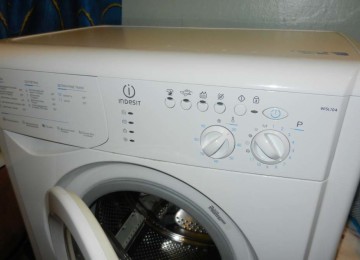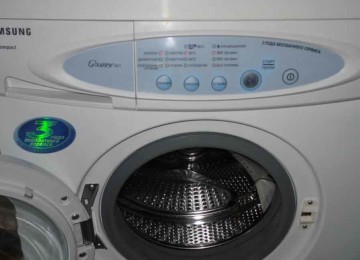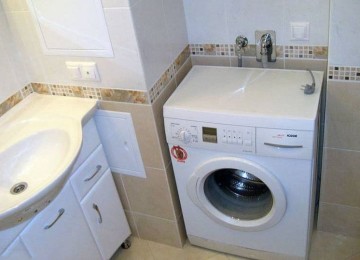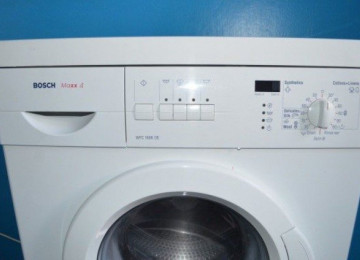A label with a serial number applied at the factory allows you to clarify the place of manufacture and year of manufacture of the washing machine. The information will be useful when purchasing used equipment or when contacting a post-warranty repair service. The accompanying documents indicate information about the date of transfer of the product to the first owner; the warranty card and operating instructions do not allow one to determine the time of manufacture.

- Information about the washing machine number will be useful for repairs.
Universal ways to find out the release date of a washing machine
Factory stickers or nameplates can be used to determine the date of manufacture. Information can be obtained by analyzing the parts of the washing machine. For example, the plastic elements indicate the month and year of manufacture, which approximately correspond to the time the equipment was assembled.
Sticker on the body
When manufacturing equipment, a label is glued to the wall of the case, which contains basic information about the equipment. The sticker is made of moisture-resistant material.The label indicates the serial number, model code, date of manufacture, maximum power consumption and additional information. The location of the sticker depends on the manufacturer; factories can glue the identifier to the back cover or the front part of the case, closed by the hatch cover.
To inspect the label located on the back wall, you must:
- Turn off power.
- Turn off the water at the valve and unscrew the hose from the connector.
- Remove the drain hose and then move the equipment away from the wall.
- Inspect the back wall; the factory sticker is most often located on the lower right edge.

- A moisture-resistant label is attached to the machine.
The sticker has a separate field indicating the month and date of manufacture. The identifier is a combination of numbers of the form xx/yyyy or xx.yyyy; no special data encoding is used.
The date is also present in the serial number, but deciphering the alphanumeric sequence is required to find out the information.
Code on the nameplate
An alternative way to determine the assembly date is based on decoding the bar code printed on a separate sticker on the case. Information may be indicated in the warranty card or in the technical passport. In addition to the barcode, there is additional data that allows you to identify the model. Some manufacturers print a serial number, which includes information about the place and date of manufacture. The decoding algorithm and the meaning of letters and numbers depend on the manufacturer.
For example, Samsung uses codes like yyyyyyy12xxxxxW, where:
- yyyyyyy – indicates the place of manufacture with additional information, the number of characters varies from 3 to 7;
- 1 – determines the year of assembly, the letters Y, L, P, Q, S, Z, B, C, D, F, G, H, J, K, M and N are used for designation;
- 2 - indicates the month of manufacture, for the first 9 months Arabic numerals from 1 to 9 are used, and other intervals are indicated by the letters A, B and C;
- xxxxx – equipment serial number;
- W is a service or control character that is not always present in the code.
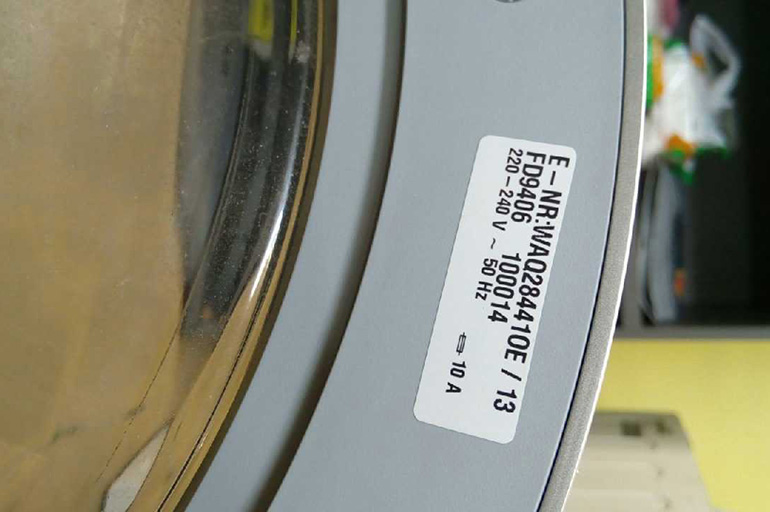
- After decoding the code on the nameplate, you can determine the date of assembly.
The nuances of determining the year of manufacture for different models
Manufacturers of household appliances use various encoding schemes for manufacturing date information. For example, the Belarusian company Atlant uses markings of the form 1XYZ567890, in which the X position indicates the last digit of the year, and the YZ numbers indicate the calendar week. It is impossible to be mistaken by 10 years when determining the date of manufacture of a product, since the manufacturer is constantly introducing new models of washing machines to the market.
Electrolux products are encoded with 9 numbers. The first digit indicates the year of manufacture, and the next pair of characters determines the calendar week. For example, if a machine has an ID of 73012345, then the equipment was assembled in week 30 of 2017 and has a factory ID of 12345.
The structure and type of marking do not depend on the place of manufacture and market for the product.
Since 2001, the Beko company has been using markings of the form NN–1ХХХХХХ–MM, in which the factory identifier 1ХХХХХХ is hidden. The NN field indicates the year, and MM the month of manufacture. For example, code 11-100135-06 indicates an assembly date of June 2011, the product was manufactured 100135th from the beginning of the billing period.
Bosch/Siemens/Gaggenau
Products of the German brands Bosch or Siemens, unified across many components, have a product identifier FD. The number consists of 10 digits and is printed on a label that is glued to the inside of the hatch cover. To decrypt, you need to enter the identifier into a special program that allows you to correctly determine the production date of washing machines assembled after January 1970. For code 771100520, the utility will determine the production date as November 1997.
The FD code (short for Factory Date) consists of 2 groups of numbers:
- 4 digits indicating the date of manufacture;
- 6 characters that allow you to find out the assembly line number and serial identifier of the machine.
.jpg)
- Bosch products have a product identifier.
The German manufacturer uses an original equipment assembly date coding system:
- The first position contains the decade identifier; numbers from 5 to 9 are used. The numbers correspond to time periods from 1970, broken down by decade. For equipment assembled from 2020 to 2029, the number 0 is applied.
- In the second position is a number indicating the year within the decade.
- In the third and fourth places are numbers indicating the calendar month; combinations from 01 to 12 are used.
For example, the identifier 771100520 discussed above can be deciphered as:
- 7 – equipment was manufactured during the decade from 1990 to 1999;
- 7 – the washing machine was assembled in the 7th year of the decade, in the example considered – 1997;
- 11 – equipment was manufactured in November;
- 00520 – the machine was the 520th, assembled in the indicated month.
For Bosch, Siemens or Gaggenau products, a 6-digit serial number identifier may be used.The additional number located in the first position indicates the installation line. The plant code is indicated in a separate 18-character field on the label (for example, for German companies the numbers 40, 45, 48 and 99 are highlighted).
Comparing information from different fields allows you to verify the authenticity of the label and accurately find out the month and year of manufacture of washing machines.
Indesit
Indesit and Hotpoint Ariston are part of the Whirlpool Corporation and use a unified identification system. At the top of the manufacturer's label there are fields indicating the model, industrial code (11 digits) and serial number, consisting of 9 numbers. When contacting customer service by calling the hotline, you must indicate the full code of 20 characters.
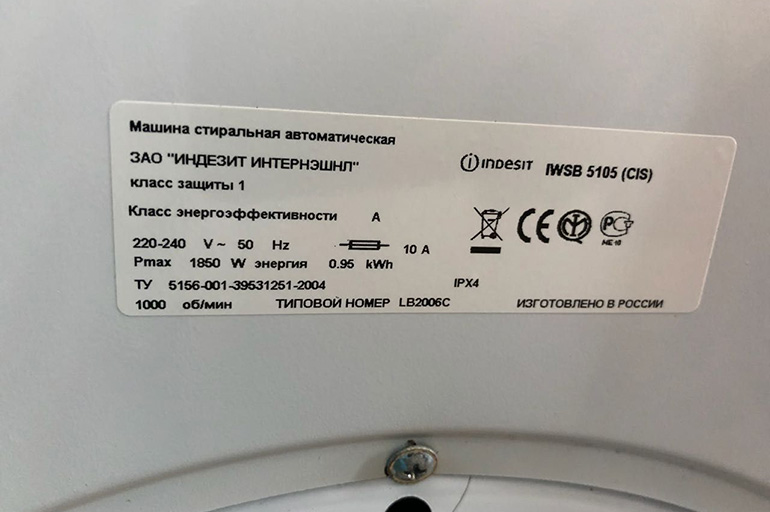
- Indesit has a unified identification system.
The owner of the equipment can independently determine the date of assembly of the machine based on the 9-digit code:
- the first digit indicates the last digit of the year;
- the second and third numbers allow you to determine the month;
- the fourth and fifth positions indicate the day of production.
For example, if the serial number 309264432 is indicated on the machine, then the equipment was manufactured on September 26, 2013. On front-loading products, the label is affixed to the back of the case or to the front plane under a removable plastic strip located at the bottom. On vertical type machines, the identification sticker is located only on the rear surface.
Whirlpool products are marked with a double code consisting of 2 parts (each with 12 characters). Code 12NC, starting with the number 85, is a service code and does not contain information about the assembly date.Information is present in 3–6 positions in the serial number; pairs of numbers correspond to the year and month of manufacture. For example, a machine with code 341307000567 was assembled in July 2013 and was in position 567 on the assembly line.
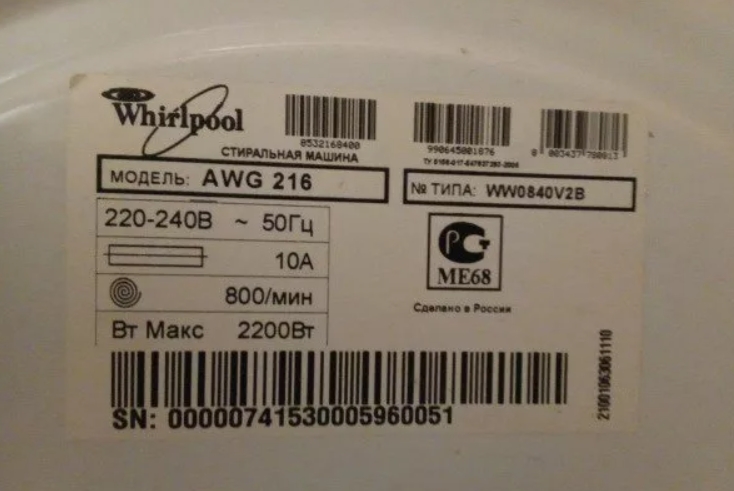
LG
LG brand washing machines have labels with the manufacturer’s logo and a barcode indicating the model name and serial number. The sticker is used for quick identification of equipment in the service. The marking is applied on the front part under the hinged hatch cover or on the drain filter plug. On some models, the sticker is located on the outside of the door. The information is duplicated in the technical data sheet attached to the machine in the service documentation package.
.jpg)
- LG washing machines have a label with a serial number.
In the serial number, the first 3 positions contain numbers indicating the year and month of production. The presence of the letters KW after the numbers allows you to identify the machine assembled in South Korea. The label contains a model marking consisting of 8 or 9 characters, which allows you to determine the motor power, type of loading, dimensions and color of the case, and the presence of additional functions.
For example, a code like 604PNJC1S548 stands for:
- 6 – year of assembly; in the example under consideration, the equipment was manufactured in 2016;
- 04 – month of assembly (April);
- PN – place of production China, RA or RW codes are allocated for the Russian plant, PW marking is used for the plant in Poland;
- JC1S548 – factory identifier containing information about suppliers of a number of components.
The structure of the number does not depend on the model or market. The production year for LG products repeats on a ten-year cycle.When purchasing a used washing machine, you must clarify in advance the time interval for the production of the model.






